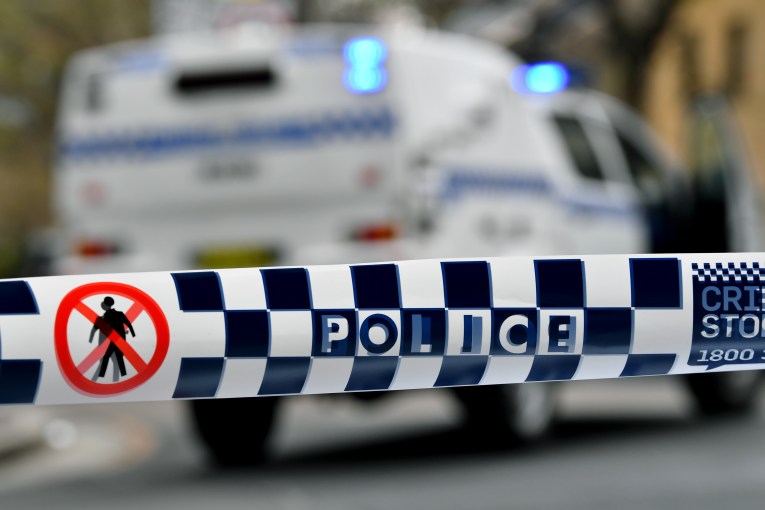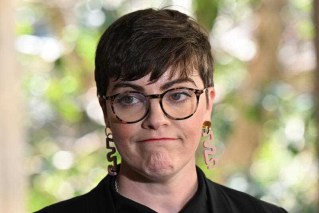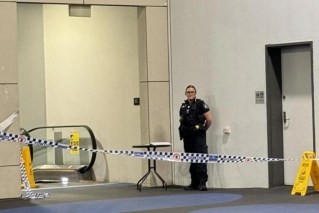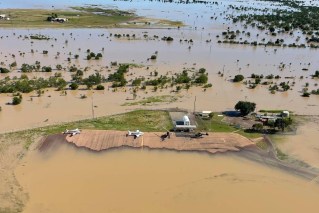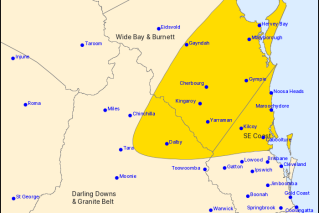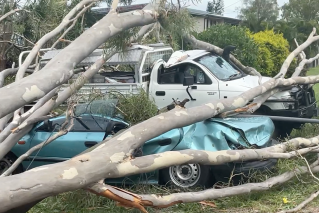Campaigners from 1960s return to fight for Great Barrier Reef
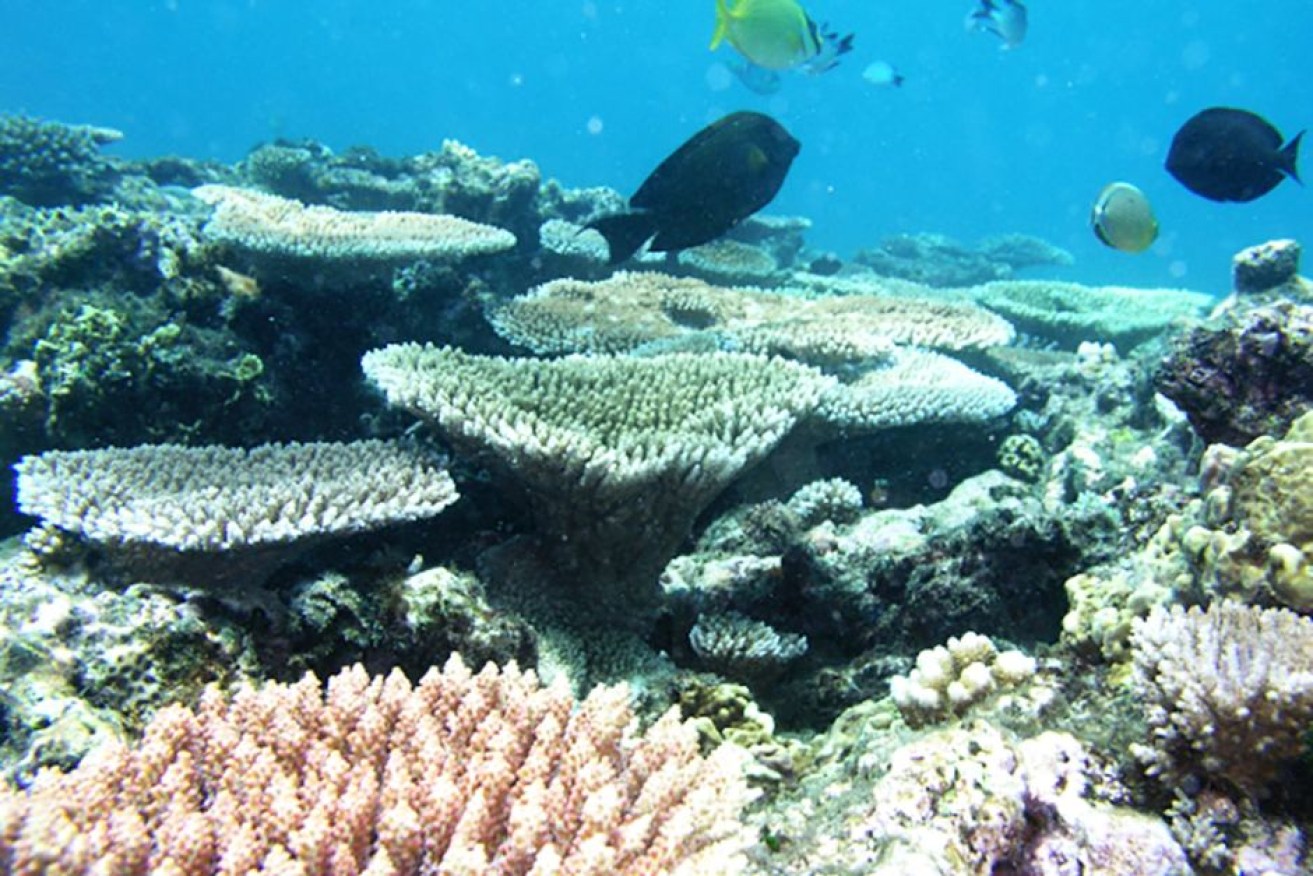
Fish and coral at Ellison Reef on Queensland's Great Barrier Reef. Photo: Australian Institute of Marine Science
It is half a century since marine researcher Eddie Hegerl first dived on Ellison Reef on the Great Barrier Reef off Mission Beach in north Queensland.
He was a penniless 22-year-old researcher when he joined a tiny grassroots group in their battle to save the reef from certain destruction.
“We were optimistic,” he said.
But the odds were stacked heavily against them.
Although now a treasured World Heritage Area and marine park, 50 years ago the Great Barrier Reef was targeted for mining.
Reef campaign begins

Eddie Hegerl (left) and John Busst (centre) campaigning in 1968 in Innisfail. Photo: Friends of Ninney Rise/ABC
In 1967, artist and Mission Beach resident John Busst found an ad in the local paper for an application to mine lime from Ellison Reef for use as cheap fertiliser.
The proponent claimed it was a dead reef but Mr Hegerl led the survey that showed it was alive and well.
“Very much a thriving reef,” Mr Hegerl said. “I recorded about 26 species of fish and my colleague Ross Robertson found 88 species of coral.”
They beat the mining bid in court but a bigger battle was looming with the then-Bjelke-Petersen government determined to open the entire reef for oil.
“I think it was December 24, 1968 that I noticed a government notice in The Courier-Mail [newspaper], in which they were calling for prospecting authorities for the entire Great Barrier Reef region,” Mr Hegerl said.

More than 100,000 ‘Save the Barrier Reef’ campaign stickers were sold. Photo: Australian Marine Conservation Society/ABC
In 1979, then-mining minister Ron Camm told the ABC’s Nationwide program “there’s been no scientific evidence ever submitted that crude oil will destroy coral”.
Mr Camm also claimed in the media that “crude oil encouraged coral growth”.
The tiny Save the Reef campaigners dug in – and led by Mr Busst at his home in Ninney Rise that has now been heritage listed – they drove an international campaign that spanned 12 years.
Australians heard the call and demanded the reef be protected.
‘Australia’s biggest conservation battle’
This weekend, Mr Hegerl returned to dive on Ellison Reef to mark the 50th anniversary and was joined by campaigners, conservationists and scientists.
Dr Charlie Veron, marine biologist and former chief scientist of the Australian Institute of Marine Science (AIMS), said it was an extraordinary campaign.
“It was I believe Australia’s biggest conservation battle ever – if it didn’t happen we wouldn’t have a Great Barrier Reef today – there would have been mining and oil drilling everywhere,” Dr Veron said.

Eddie Hegerl talks to a group at Ninney Rise, the heritage listed home of John Busst. Photo: ABC
Sydney University history professor Iain McCalman said it was a campaign of the people.
“These were ordinary people they were up against enormous odds and they won,” Professor McCalman said.
“Now we want to re-inspire people because we’re against enormous odds again.”
In 2012, Mr Hegerl returned to Ellison Reef to mark the 45th anniversary and he found it largely intact, but with some damage caused by cyclones and crown of thorns starfish.
Since then sea temperatures have been warm enough to cause two consecutive major bleaching events on the reef and several cyclones.
Reef fight far from over
The campaigners said, half a century later, the fight for the reef was far from over.
This time, Mr Hegerl found the damage was more extensive.
While elsewhere on Ellison and other reefs in the region there are beautiful dive sites and large areas where coral is alive and well, the section Mr Hegerl saw on the weekend is badly damaged.
“Very little live coral, very little in this area anyway – very depressing and we’ve got to do better somehow,” Mr Hegerl said.

Mr Hegerl says the damage on Ellison Reef is more extensive. Photo: ABC
He was joined on the dive by Queensland Tourism Industry Council chief executive officer Daniel Gschwind.
“We saw the grandeur of the reef today, but we also saw the challenges – there are natural threats, there are manmade threats and above all, climate change,” Mr Gschwind said.
“I believe tourism plays an important role of being constantly that reminder for the visitors who come here and the people who experience its beauty to go back and advocate for the protection of this reef, but also for the protection of the planet.”
These scientists and conservationists want Australians to demand stronger action on climate change and sediment run-off.
Mr Hegerl said it was the “most important issue to give the reef a chance in the future”.
Dr Veron said the “path we’re on is very, very serious”.
“We have to have massive action on climate change,” Dr Veron said.
The Federal and Queensland governments have committed to the Reef 2050 strategy and have promised to bring forward a review of the plan, but the campaigners said more was needed.
-ABC
